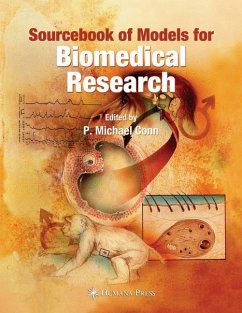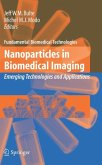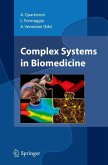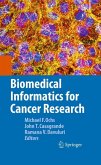The collection of systems represented in Sourcebook of genomic programs, although this work is certainly well Models for Biomedical Research is an effort to re?ect the represented and indexed. diversity and utility of models that are used in biomedicine. Some models have been omitted due to page limitations That utility is based on the consideration that observations and we have encouraged the authors to use tables and made in particular organisms will provide insight into the ? gures to make comparisons of models so that observations workings of other, more complex, systems. Even the cell not available in primary publications can become useful to cycle in the simple yeast cell has similarities to that in the reader. humans and regulation with similar proteins occurs. We thank Richard Lansing and the staff at Humana for Some models have the advantage that the reproductive, guidance through the publication process. mitotic, development or aging cycles are rapid compared As this book was entering production, we learned of the with those in humans; others are utilized because individual loss of Tom Lanigan, Sr. Tom was a leader and innovator proteins may be studied in an advantageous way and that in scienti?c publishing and a good friend and colleague to have human homologs. Other organisms are facile to grow all in the exploratory enterprise. We dedicate this book to in laboratory settings or lend themselves to convenient analy- his memory. We will miss him greatly.
From the reviews:
"Conn, a distinguished scientist ... has created one of the most significant and comprehensive model reference tools in recent years. ... provides a system of relevancy that leads the serious student to adapt the model to their own different and perhaps unique research applications. The essays have a sufficient number of tables and overwhelmingly black-and-white figures and photographs to assist in comprehension. ... Very useful for libraries serving upper-division and graduate students in the life sciences." (John M. Robson, American Reference Books Annual, 2009)
"Sourcebook of Models for Biomedical Research is a collection of the various models developed over several decades in biomedicine. ... The chapters are presented clearly, easy to understand, and interesting to read. ... In summary, this book would be a great addition to the library of anyone who is interested in an overview of model development for biomedical research." (Dongwen Wang, The Quarterly Review of Biology, Vol. 85 (3), September, 2010)
"Conn, a distinguished scientist ... has created one of the most significant and comprehensive model reference tools in recent years. ... provides a system of relevancy that leads the serious student to adapt the model to their own different and perhaps unique research applications. The essays have a sufficient number of tables and overwhelmingly black-and-white figures and photographs to assist in comprehension. ... Very useful for libraries serving upper-division and graduate students in the life sciences." (John M. Robson, American Reference Books Annual, 2009)
"Sourcebook of Models for Biomedical Research is a collection of the various models developed over several decades in biomedicine. ... The chapters are presented clearly, easy to understand, and interesting to read. ... In summary, this book would be a great addition to the library of anyone who is interested in an overview of model development for biomedical research." (Dongwen Wang, The Quarterly Review of Biology, Vol. 85 (3), September, 2010)








